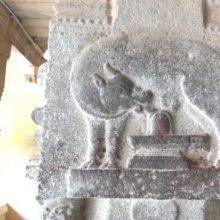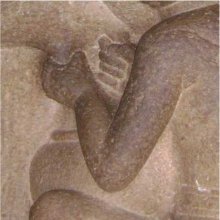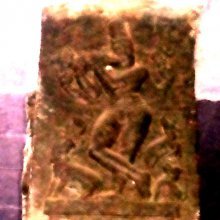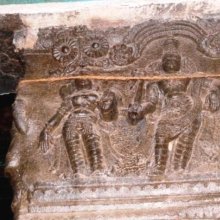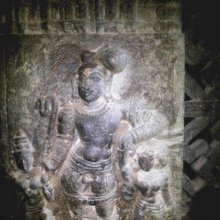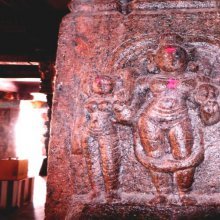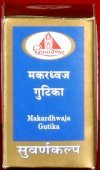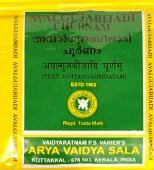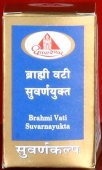Cow: 2 definitions
Introduction:
Cow means something in Buddhism, Pali, Hinduism, Sanskrit. If you want to know the exact meaning, history, etymology or English translation of this term then check out the descriptions on this page. Add your comment or reference to a book if you want to contribute to this summary article.
Images (photo gallery)
(+13 more images available)
In Hinduism
Ayurveda (science of life)
Veterinary Medicine (The study and treatment of Animals)
Source: Asian Agri-History: Paśu Āyurvēda (Veterinary Medicine) in GaruḍapurāṇaCows were regarded as wealth and were the backbone of the economy of ancient Indians, i.e., Aryans. Wars were fought for acquiring cows. Cattle were one of the most frequently used animals described in Vēda. Cows were regarded as mother (Gomātā) and referred to as Aghaṇya. The Vedic Society in India was dominated by the “cow culture” and Vedic people adored the cow and regarded it as the source of their good fortune, happiness, and good health (Ṛgvēda 6.28.1, 6). It is believed that the religious priests, who had the responsibility of maintaining cattle, were the first animal healers or veterinarians.

Āyurveda (आयुर्वेद, ayurveda) is a branch of Indian science dealing with medicine, herbalism, taxology, anatomy, surgery, alchemy and related topics. Traditional practice of Āyurveda in ancient India dates back to at least the first millenium BC. Literature is commonly written in Sanskrit using various poetic metres.
In Buddhism
Tibetan Buddhism (Vajrayana or tantric Buddhism)
Source: academia.edu: The Structure and Meanings of the Heruka MaṇḍalaThe Cow is associated with the Yoginī (female deity) named Gāvī, being situated in the Medinīcakra, according to the 10th century Ḍākārṇava-tantra: one of the last Tibetan Tantric scriptures belonging to the Buddhist Saṃvara tradition consisting of 51 chapters.—Accordingly, the medinīcakra refers to one of the three divisions of the dharma-puṭa (‘dharma layer’), situated in the Herukamaṇḍala. The 36 pairs of Ḍākinīs [viz., Gāvī] and Vīras are yellow in color; the shapes of their faces are in accordance with their names [e.g., Cow]; they have four arms; they hold a skull bowl, a skull staff, a small drum, and a knife.

Tibetan Buddhism includes schools such as Nyingma, Kadampa, Kagyu and Gelug. Their primary canon of literature is divided in two broad categories: The Kangyur, which consists of Buddha’s words, and the Tengyur, which includes commentaries from various sources. Esotericism and tantra techniques (vajrayāna) are collected indepently.
See also (Relevant definitions)
Starts with (+15): Cow basil, Cow bone, Cow cabbage, Cow clover, Cow cockle, Cow dung, Cow foot, Cow grass, Cow herb, Cow hop clover, Cow milk, Cow parsnip, Cow pimpler, Cow skin, Cow soapwort, Cow tamarind, Cow urine, Cow-lily, Cow-okra, Cow-poison.
Ends with: Cow bone.
Full-text (+3666): Gomaya, Dhenu, Go, Pancagavya, Gavya, Surabhi, Kamadhenu, Kapila, Godhana, Godana, Goghna, Gokshira, Gava, Gograsa, Gomedha, Shatagu, Gogranthi, Gomutra, Usra, Govasha.
Relevant text
Search found 355 books and stories containing Cow; (plurals include: Cows). You can also click to the full overview containing English textual excerpts. Below are direct links for the most relevant articles:
Animal Kingdom (Tiryak) in Epics (by Saranya P.S)
Chapter 6.18 - How the Godana should be performed
Chapter 6.15 - Godana In Mahabharata
Manusmriti with the Commentary of Medhatithi (by Ganganatha Jha)
Verse 11.108 < [Section XI - Expiation of “Minor Offences”: Cow-killing (goghna)]
Verse 8.231 < [Section XXXIX - Disputes between Owner and Keeper]
Verse 3.95 < [Section VII - Duties of the Householder]
The Agni Purana (by N. Gangadharan)
Chapter 292 - The greatness of cows and their welfare (go-śānti)
Chapter 210 - Sixteen great Gifts (mahādāna)
The Tattvasangraha [with commentary] (by Ganganatha Jha)
Verse 1058 < [Chapter 16 - Examination of the Import of Words]
Verse 938 < [Chapter 16 - Examination of the Import of Words]
Verse 1022 < [Chapter 16 - Examination of the Import of Words]
Gobhila-grihya-sutra (by Hermann Oldenberg)
Bharadvaja-srauta-sutra (by C. G. Kashikar)
Related products
(+33 more products available)
